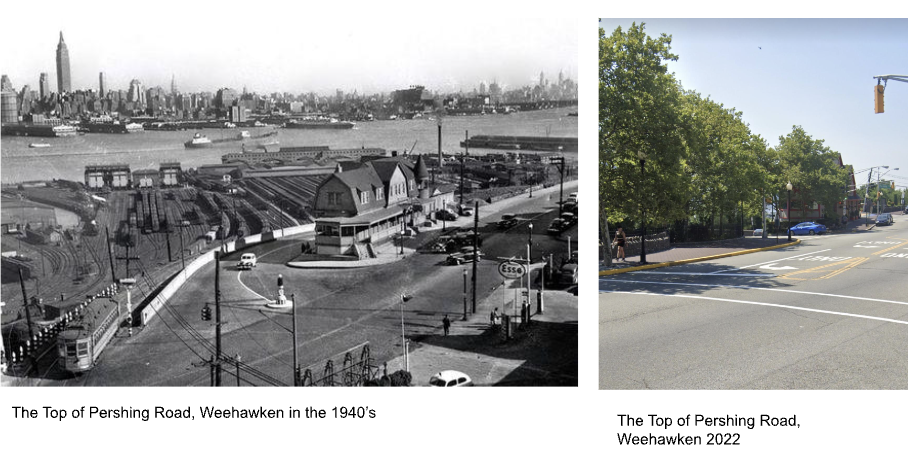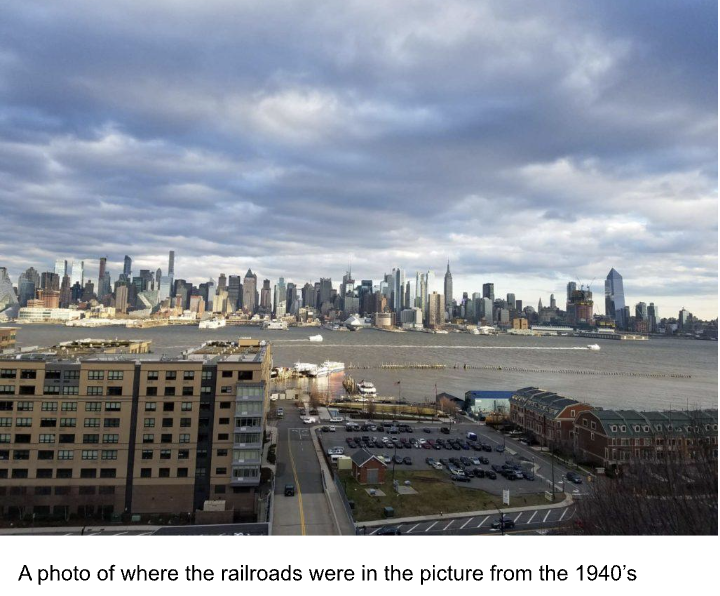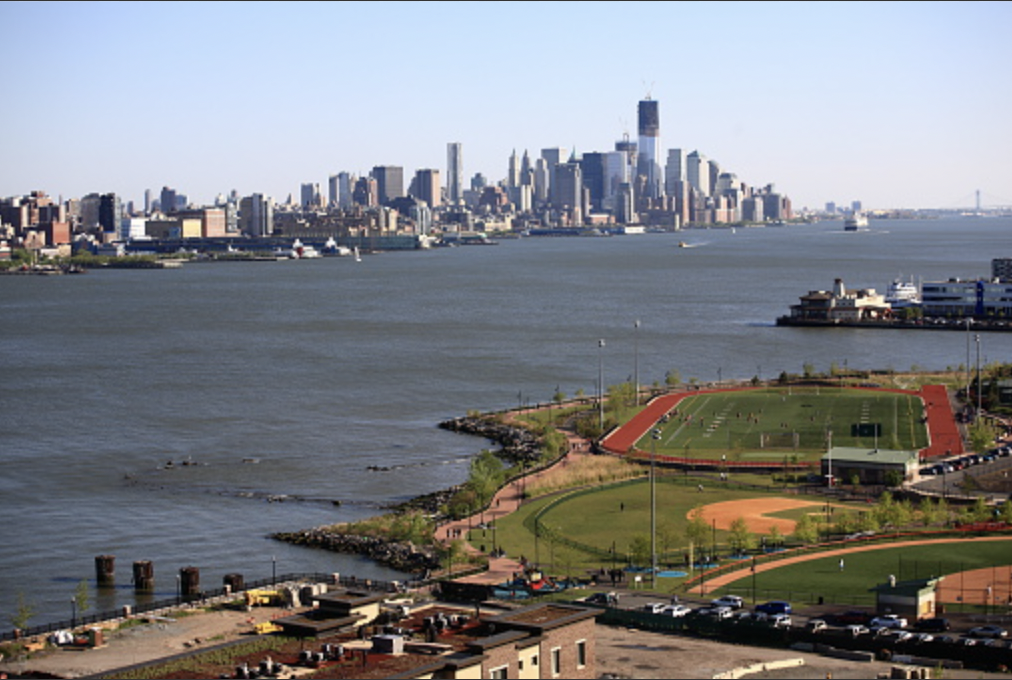Let me set the scene for you. The year is 2012, and we are in Weehawken, New Jersey, right next to the busy city of Hoboken, and the lunatic traffic of the Lincoln Tunnel. Yet somehow my hometown of Weehawken was quiet and peaceful. My hair is in pigtails, and I am riding my red and silver Razor scooter to my favorite place, the waterfront park. Technically it is called The Weehawken Waterfront Park and Recreation center, but nobody calls it that. I am racing on the fastest scooter in the world, past the Manhattan skyscrapers that are just across the Hudson River, on the small boardwalk, squeezed between the river and some houses. I pulled into the park from the northernmost entrance connected to the boardwalk, ready to climb onto the huge pirate ship play structure and mount the rocking horses that surround it. There were only thoughts of pure joy in my mind. How was I going to win my next scooter race? How am I going to get from one side of the pirate ship to the other without touching the lava floor? I mean at the age of 6, what better thing was there than this park?
Fast forward a few years, to the age of 10. I wanted to learn a new sport: tennis. Alongside my dad throwing me balls, this park gave me the facilities to learn the sport. There were three tennis courts standing side by side, with freshly painted lines crossing the blue and green courts. Although the tennis courts, alongside the rest of the park, had been created in 2005, they still looked brand new. I was so excited to play. I picked up my pink Wilson racquet and played tennis for the first time at the waterfront park. I hit ball after ball, (mostly into the net), but I never wanted to leave. I would create games with my dad to try and get better, and I would win a nickel for every point I won.
After a few years of practicing at the park, I became a much better tennis player and started lessons away from the park. After high school started, I was able to play for the varsity team at Fieldston. Although my lessons of tennis with my dad no longer happen, the tennis courts are still a place I practice regularly.
After going to school at Fieldston for a long time, my friend group has changed from primarily people in my town to primarily people in NYC, however, the park still holds a place in my heart. When my friends come to visit me in New Jersey, I make sure to bring them to the park. I have brought them to play tennis on the same courts I grew up playing on. I have brought them to throw frisbees across the baseball field that no one uses for baseball. They marvel at the tall cliffs, covered in trees and greenery on one side, and the view of the city they call home on the other.
One of my friends from NYC said, “This is the best view of Manhattan I have ever seen, it’s a nice break from being in the city.” Facing directly into west midtown, the park did hold incredible views. In fact, this is one of the main reasons my family moved here and still lives here today. My dad described it as, “close enough to being in the city without all the noise.” Compared to where they lived previously, Jersey City, Weehawken was definitely quieter and more relaxing.
Although Weehawken’s waterfront has always held these beautiful views, it was not always been the residential place it is today. Originally bludgeoned with marshlands at the base of its cliffs, during the times of Aaron Burr and Alexander Hamilton’s duel in 1804, the land has undergone a major transformation since then. Sitting directly across from New York Harbor, Weehawken served as a connection between the New York City market, and the rest of the country, whether it be north, south, or east. In order to access the town’s full potential, a system of railroads had to be created so that the town was ready to accept all of this economic traffic. Weehawken was transformed from marshlands to the industrial heart of America. Railroads upon railroads lay across the land at the foot of Weehawken’s Palisade cliffs, churning out heaps and heaps of toxic wastes, amidst the industrial revolution. In fact, the land on which the park is built today was owned by the Erie Railroad Company and functioned as a freight yard for the trains going in and out of Weehawken.

Atop the roaring cliffs of the Palisades, the scene looked very different. This land held farmlands that enclosed estates. Not only was the land divided between beautiful and scenic atop the cliffs, and bustling filled with railroads below, the people of Weehawken were divided. After talking to a member of Weehawken’s historical society, I learned one of the most notable estates atop the cliffs was the King Mansion. It was formally located at what is now 21 Hamilton Avenue, directly above Hamilton and Burr’s dueling grounds. James Gore King was a wealthy banker, known as the “Prince of Wall Street ”, who had decided to make Weehawken his, and the rest of his family’s home. He and many other wealthy families represented the population who lived atop the cliffs, many of those mansions still standing today. Apart from the bustling streets of New York, and away from the ruckus happening at the base of the cliffs, The top of the Palisades was the perfect place to live. Unlike the railroad yards, it was not composed of toxic, cancer-causing lands, but it still held its incredible New York City views.
Just below these incredible mansions, a different class of people lived. The poor, working-class of Weehawken inhabited the uninhabitable land, showing the massive class divide represented in the land of Weehawken. Located at what is now Willow Avenue, blacksmith and horseshoeing shops existed, grocery stores, a post office, barber shops, tailor shops, everything needed to comprise a small bustling town. Close to their workplace, the people below the cliff were largely employed at Weehawken’s ports and railroads and had to live in these virulent conditions. The scene below the cliffs was very different to above.

Incredibly, this class divide still holds true today, except in a slightly different form. After the railroads were discontinued, and a chromium cleanup was approved in 2004, the land was transformed yet again. After covering any and all traces of the toxic spewing industry Weehawken’s waterfront was formally home to, a new wave of housing was brought into the base of the Palisades. No longer berated by the loud train engines, and the noxious gasses, the waterfront became a desirable place to live. New housing developments were created, and as it lay closer to the Hudson, it became an even more desirable place to live than atop the cliffs. This resulted in a complete switch in the classes each part of the town was home to. People were attracted to its proximity to the waterfront. No longer was the base of the Palisades an objectionable place to live, rather it was a quiet break from New York, with an incredible view of Manhattan. Following these chromium cleanups, the park I grew up in was built, the Waterfront park, where it still stands today.
This park has been an important part of my childhood. One man who was at the park said that this was a place he loved to bring his kids to play on the fields and in the playground, and he loves to take advantage of the riverside boardwalk to run and jog. Hearing this story of kids who still use the park to this day has highlighted how this park continues to be an important component to many people in my town, not just myself. It has brought together everyone from all parts of Weehawken on its amazing waterfront grounds.






